Baseball History Comes Alive Now Ranked #2 by Feedspot Among All Internet Baseball History Websites and Blogs!
Guest Submissions from Our Readers Always Welcome!
[ycd_countdown id=47231]
Scroll Down to Read Today’s Essay
Subscribe to Baseball History Comes Alive for automatic updates.
As a Free Bonus, you’ll get access to my Special Report: Gary’s Handy Dandy World Series Reference Guide!
Sandy Koufax Photo Gallery
Sandy Koufax Wins His Second Cy Young Award 59 Years Ago Today!
“There are two times in my life the hair on my arms has stood up: The first time I saw the ceiling of the Sistine Chapel and the second time, I saw Sandy Koufax throw a fastball. -Dodger scout Al Campanis
“Sandy only had two pitches…both unhittable!”- Steve Stone
Today is the anniversary of a significant date in the career of Sandy Koufax. Fifty-nine years ago today, November 3, 1965, Sandy won his second of three Cy Young Awards, capturing all twenty of the writers’ votes. And it’s no wonder why: He was coming off a 26-8 season, with a 2.04 ERA and 382 strikeouts.
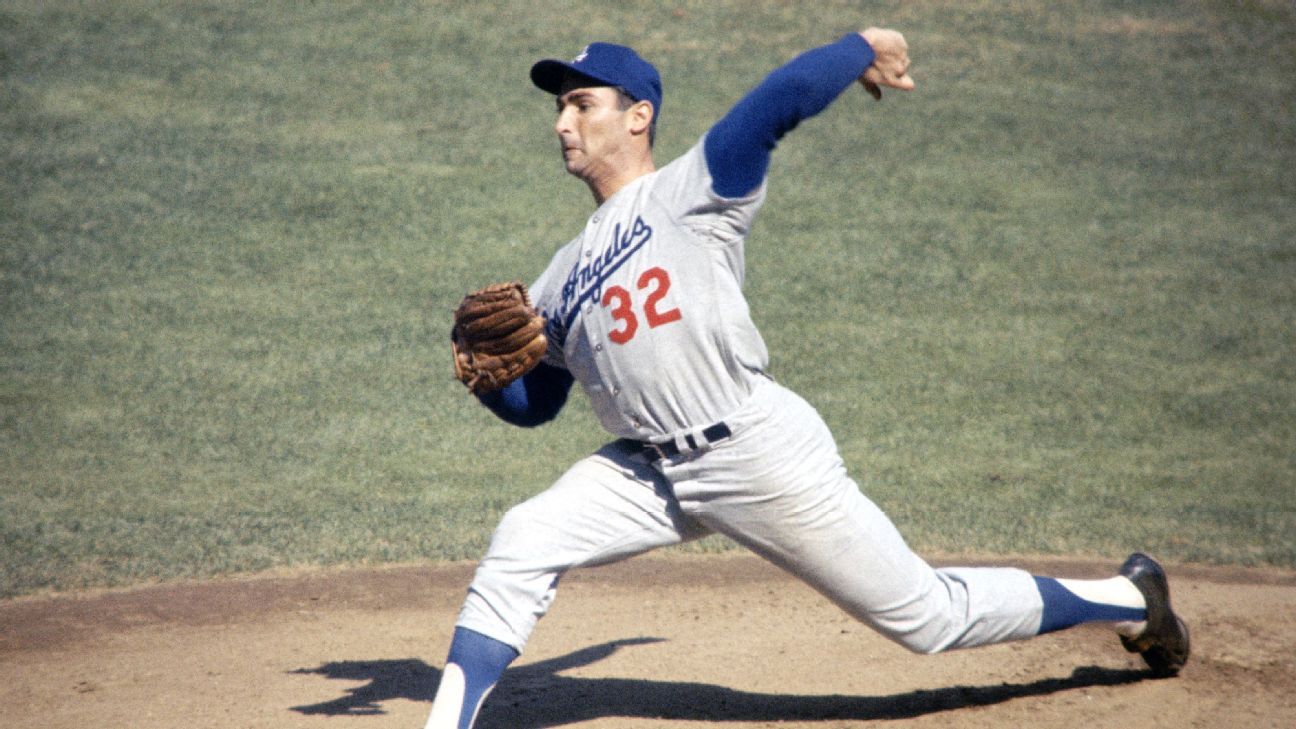
Sandy’s Early Development
Koufax attended the University of Cincinnati and was a walk-on on the freshman basketball team. In spring, 1954, he made the college baseball varsity team, going went 3–1 with 51 strikeouts and 30 walks, in 31 innings. Bill Zinser, a scout for the Brooklyn Dodgers, sent the Dodgers front office a glowing report that apparently was filed and forgotten [see photos of Sandy’s scouting report below].
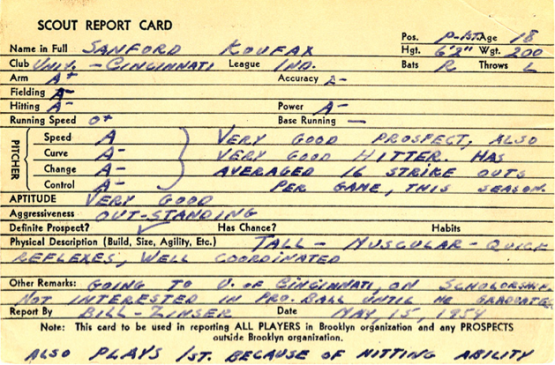
After trying out with the New York Giants at the Polo Grounds, Koufax did the same for the Pittsburgh Pirates at Forbes Field. During his Pirates tryout, Koufax’s fastball broke the thumb of Sam Narron, the team’s bullpen coach. Branch Rickey, then the general manager of the Pirates, told his scout Clyde Sukeforth that Koufax had the “greatest arm he had ever seen.” However, the Pirates at the time failed to offer Koufax a contract.
Dodgers scout Al Campanis heard about Koufax from a local sporting goods store owner. After seeing Koufax pitch, Campanis invited him to an Ebbets Field tryout with Manager Walt Alston in attendance. The Dodgers were impressed and signed Koufax for a $6,000 salary, with a $14,000 signing bonus.
Sandy’s Great Career…Incredible Stats!
Sandy Koufax’s story is really the tale of two pitchers. He started his career in 1955 and struggled through six mediocre seasons, never topping 11 wins and once leading the league in wild pitches. And then something inexplicable happened: Somehow the fire-balling lefty found his touch. Some say the turnaround occurred when Coach Norm Sherry suggested he take a little velocity off his fastball. The advice helped him evolve from just a hard thrower into a truly great pitcher. Whatever the reason, for the next six seasons he was as close to unhittable as a pitcher can be.
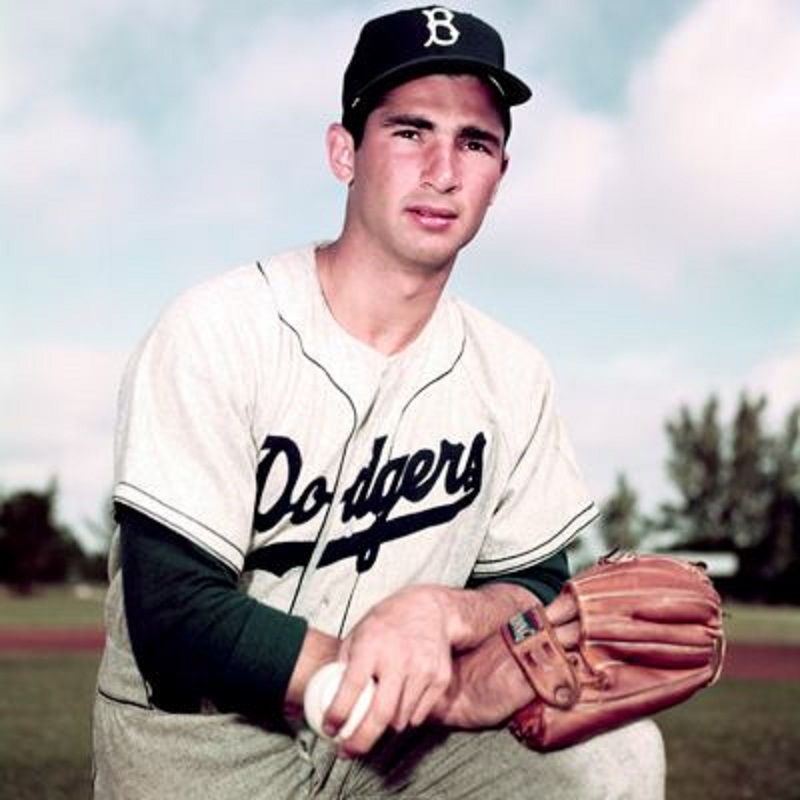
In his 12-season career, the seven-time All-Star had a 165–87 record (.654 winning percentage) with a 2.76 ERA, 2,396 strikeouts, 137 complete games, and 40 shutouts. Koufax’s career strikeouts ranked seventh in history at retirement, trailing only Warren Spahn (2,583) among left-handers. Sandy and Nolan Ryan are the only two pitchers inducted into the Hall of Fame with more strikeouts than innings pitched. He was the first pitcher to average fewer than seven hits allowed per nine innings pitched (6.79). He also became the second pitcher in history to have two games with 18 or more strikeouts, and the first to have eight games with 15 or more strikeouts. Over his last ten seasons, from 1957 to 1966, batters hit an anemic .203 against him, with an incredibly low .271 on-base-percentage and a .315 slugging average.
Koufax’s amazing run from 1961 to 1966 remains a period of brilliance almost unmatched in baseball history. During this time Koufax won five straight ERA titles; four strikeout crowns; three Cy Young awards; a National League MVP Award; three seasons with 25-plus wins; and four no-hitters, the last in 1965 being a perfect game against the Cubs.
Koufax’s postseason record is also impressive: a 4–3 won-lost record with a 0.95 earned run average in four World Series, leading the Dodgers to World Series championships in 1963 and 1965. Koufax was selected for seven consecutive All-Star games.
It All Comes to an End…
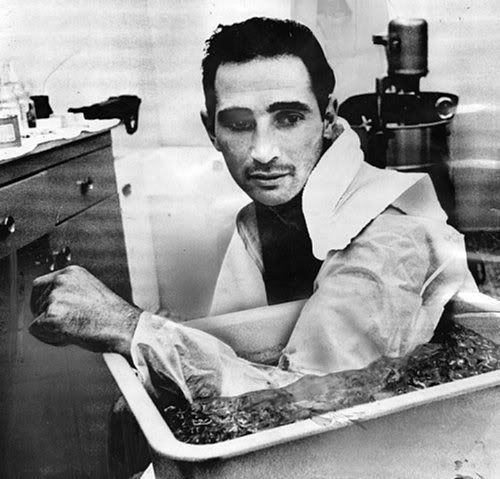
And then, suddenly, the great run ended as quickly as it had begun. The pain from ongoing arthritis – pain he had managed for several years with ice, guts, and shots – was too much. At age 30, seemingly at the top of his game, Sandy Koufax was done. In 1972, he became the youngest man ever elected to the Hall of Fame. In 1999, The Sporting News placed Koufax at number 26 on its list of “Baseball’s 100 Greatest Players.” That same year he was named as one of the 30 players on the Major League Baseball All-Century Team.
Gary Livacari
Photo Credits: Classic Baseball, the Photographs of Walter Iooss, Jr.” The Brooklyn Dodgers Photographs of Barney Stein; “The George Brace Baseball Photograph Collection;” and Public Domain.
Biographical Information: Background information from the Sandy Koufax Wikipedia page. Stats from Baseball Reference.com
We’d love to hear what you think about this or any other related baseball history topic…please leave comments below.
Gary Livacari
Subscribe to Baseball History Comes Alive to receive email updates. FREE BONUS for subscribing: Gary’s Handy Dandy World Series Reference Guide. The site is now surpassing the one million hits mark with over 1,245,000 hits: https://wp.me/P7a04E-2he
(Please note: If you were previously a subscriber to the website, you may have to resubscribe due to recent technical issues. Just use the green “Follow Us” icon below to resubscribe).

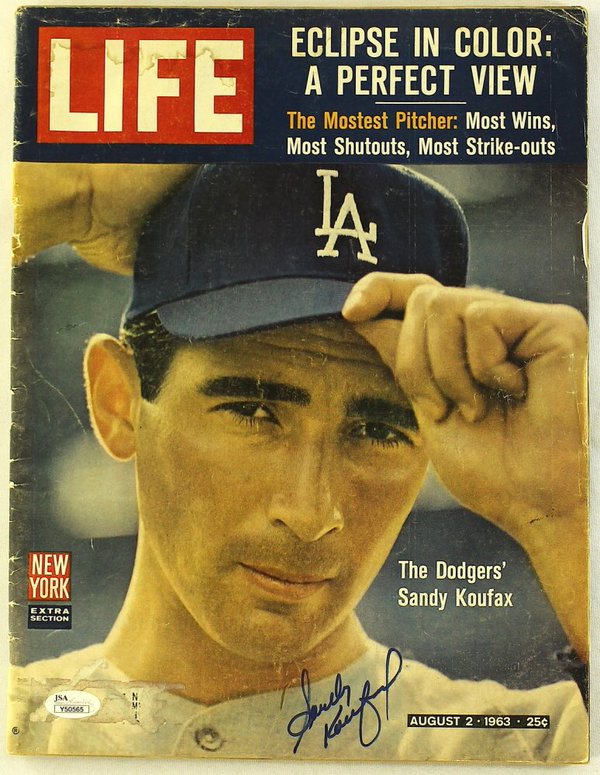
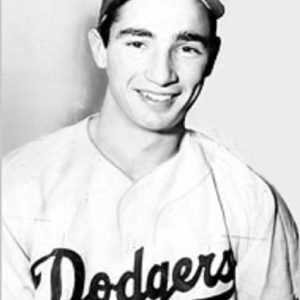
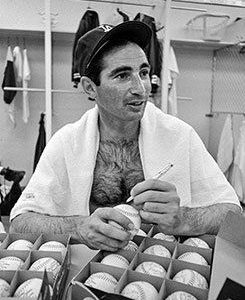
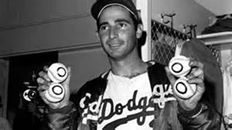
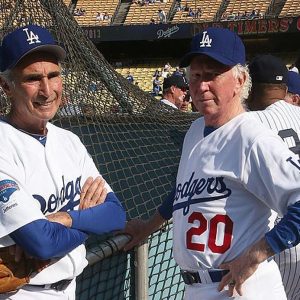
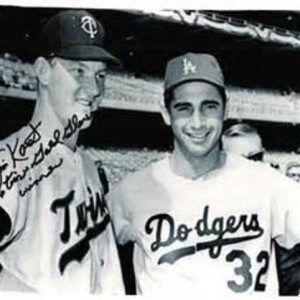
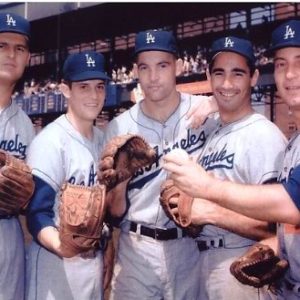
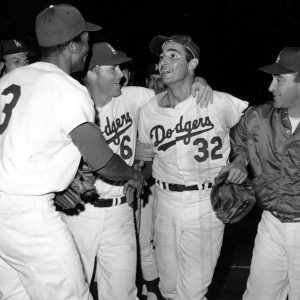
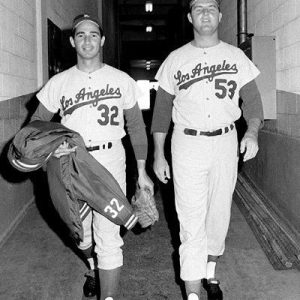
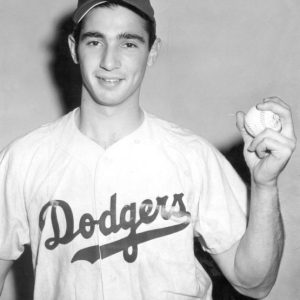

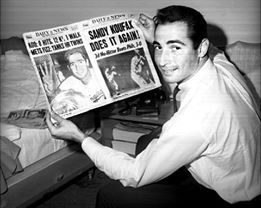
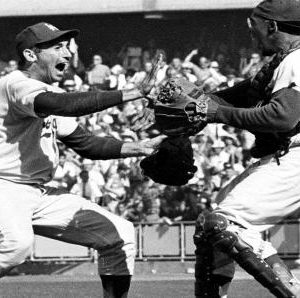
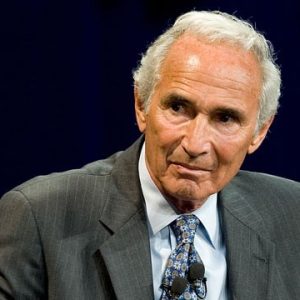

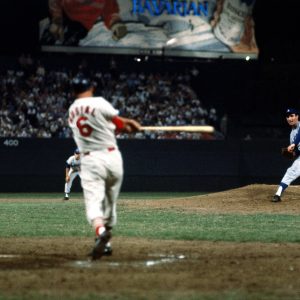
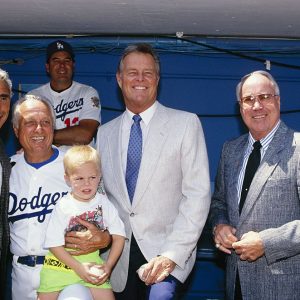
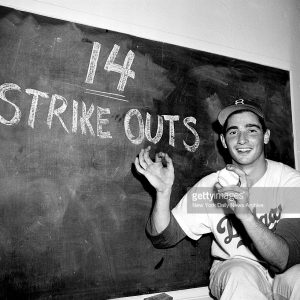
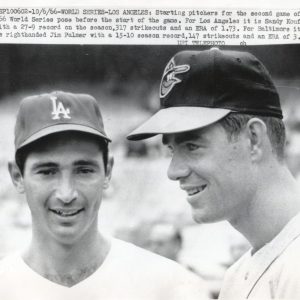
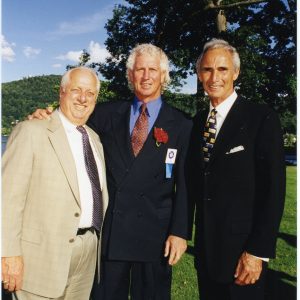
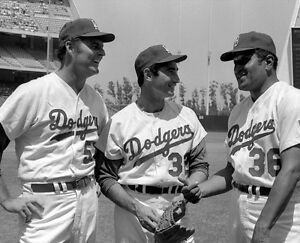
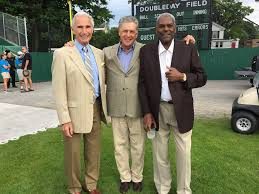
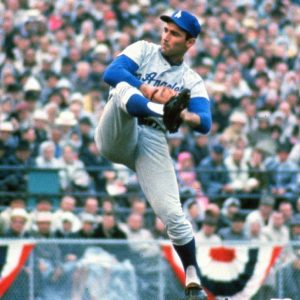
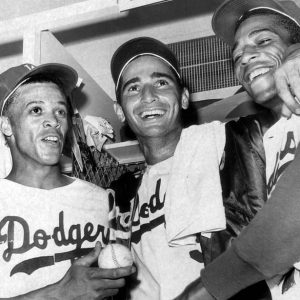
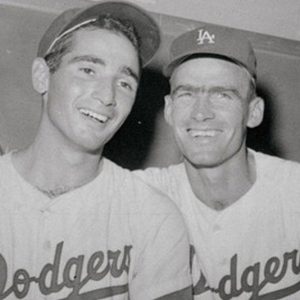
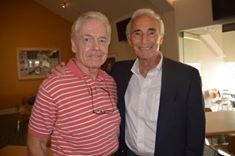
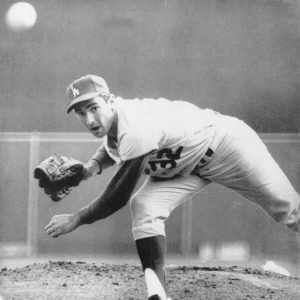
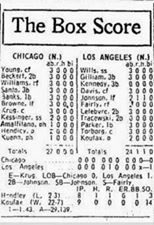
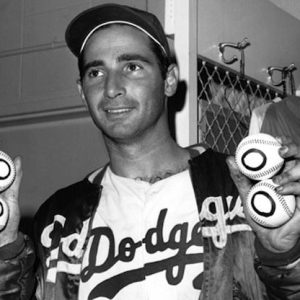
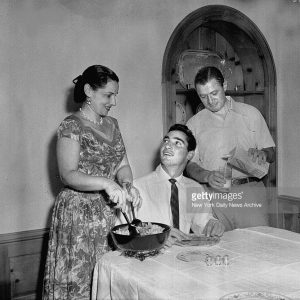
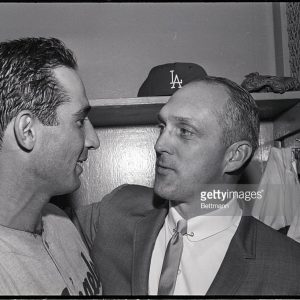
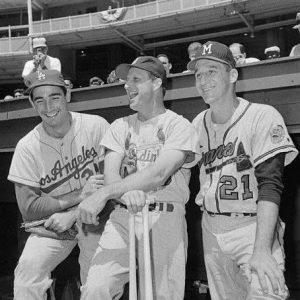
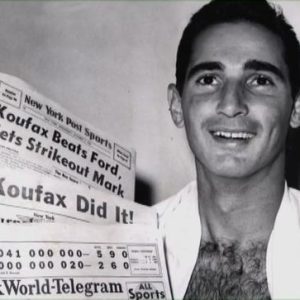
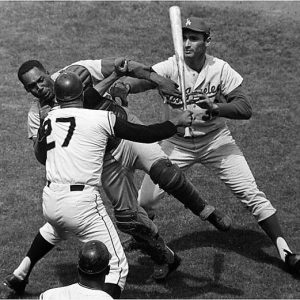
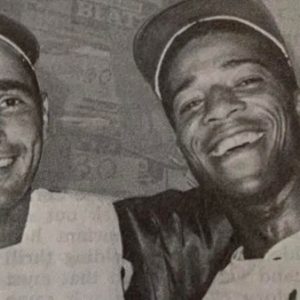
Great stuff, Gary.
I remember the 7th game of the World Series against the Twins that year. Koufax against Jim Kaat.
Koufax had previously shut out the Twins in Game 5 and was pitching on just 3 days rest. His curve was not particularly working that day and he used his fastball only and struck out 10 to clinch the Series.
His four year stretch of 1962-66 had to be the best stretch of any pitcher in MLB history.
It!s a shame he had to retire the next year with his arm literally shot to hell.
I have to laugh to think what analytics would do in that 1965 game. Koufax would have been out by the sixth inning.
BTW,
Just attended an exhibit last week at the Fitchburg Art Museum that featured 37 prints of Iooss, which included one of Koufax.
You have highlighted the great baseball photographers of the earlier 20th century in Leslie Jones and Charles Conlon.
Iooss is probably the imminent photographer in the from the late 60’s and beyond. His portfolio, though, included all sports. Just dazzling moments caught by his camera.
https://fitchburgartmuseum.org/goat-the-sports-photography-of-walter-iooss/
I’ve got a book of his photos…might have to feature him
Sorry for the rambling, but a piece of trivia:
In the September 9, 1965 perfect game
Cubs catcher Krug went on to become the architect and landscaper for the field in Iowa for the movie, Field of Dreams”.
Only a baseball nerd would know that!